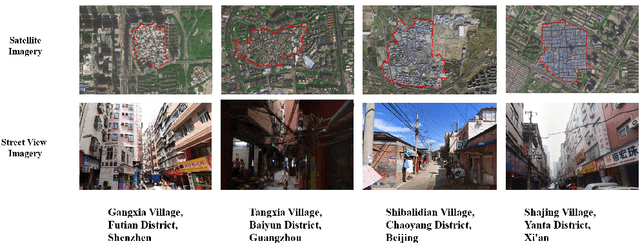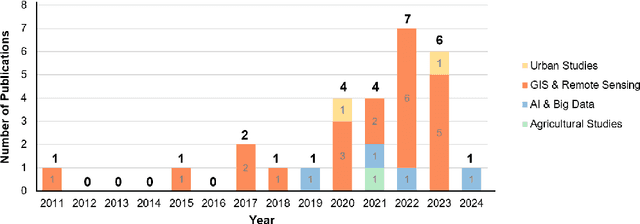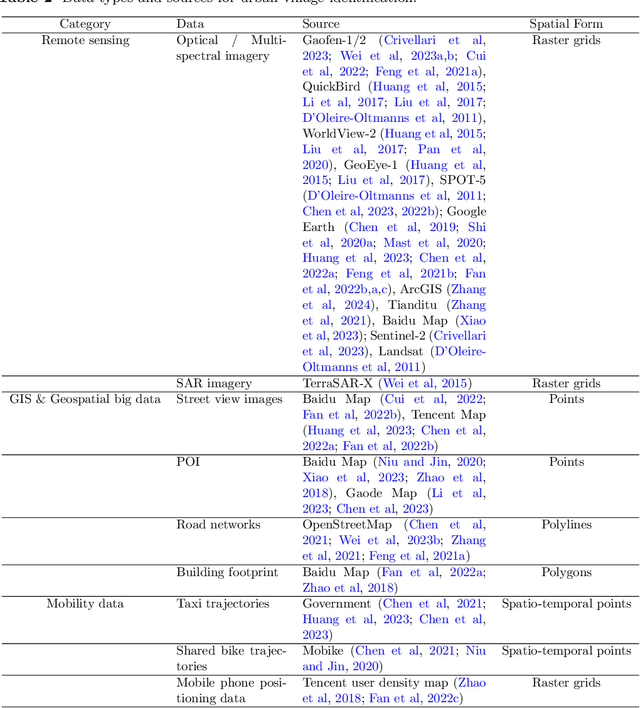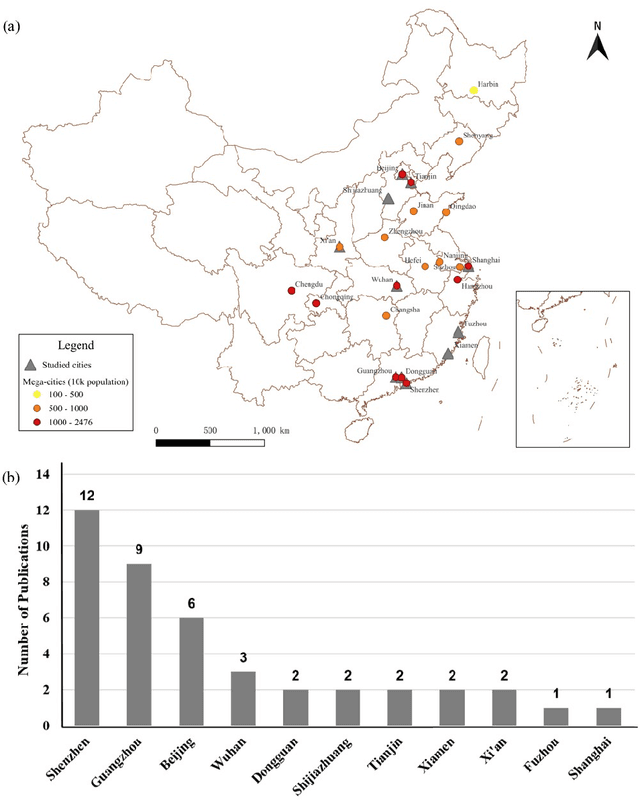Rui Cao
FocalAD: Local Motion Planning for End-to-End Autonomous Driving
Jun 13, 2025Abstract:In end-to-end autonomous driving,the motion prediction plays a pivotal role in ego-vehicle planning. However, existing methods often rely on globally aggregated motion features, ignoring the fact that planning decisions are primarily influenced by a small number of locally interacting agents. Failing to attend to these critical local interactions can obscure potential risks and undermine planning reliability. In this work, we propose FocalAD, a novel end-to-end autonomous driving framework that focuses on critical local neighbors and refines planning by enhancing local motion representations. Specifically, FocalAD comprises two core modules: the Ego-Local-Agents Interactor (ELAI) and the Focal-Local-Agents Loss (FLA Loss). ELAI conducts a graph-based ego-centric interaction representation that captures motion dynamics with local neighbors to enhance both ego planning and agent motion queries. FLA Loss increases the weights of decision-critical neighboring agents, guiding the model to prioritize those more relevant to planning. Extensive experiments show that FocalAD outperforms existing state-of-the-art methods on the open-loop nuScenes datasets and closed-loop Bench2Drive benchmark. Notably, on the robustness-focused Adv-nuScenes dataset, FocalAD achieves even greater improvements, reducing the average colilision rate by 41.9% compared to DiffusionDrive and by 15.6% compared to SparseDrive.
Transformer IMU Calibrator: Dynamic On-body IMU Calibration for Inertial Motion Capture
Jun 12, 2025Abstract:In this paper, we propose a novel dynamic calibration method for sparse inertial motion capture systems, which is the first to break the restrictive absolute static assumption in IMU calibration, i.e., the coordinate drift RG'G and measurement offset RBS remain constant during the entire motion, thereby significantly expanding their application scenarios. Specifically, we achieve real-time estimation of RG'G and RBS under two relaxed assumptions: i) the matrices change negligibly in a short time window; ii) the human movements/IMU readings are diverse in such a time window. Intuitively, the first assumption reduces the number of candidate matrices, and the second assumption provides diverse constraints, which greatly reduces the solution space and allows for accurate estimation of RG'G and RBS from a short history of IMU readings in real time. To achieve this, we created synthetic datasets of paired RG'G, RBS matrices and IMU readings, and learned their mappings using a Transformer-based model. We also designed a calibration trigger based on the diversity of IMU readings to ensure that assumption ii) is met before applying our method. To our knowledge, we are the first to achieve implicit IMU calibration (i.e., seamlessly putting IMUs into use without the need for an explicit calibration process), as well as the first to enable long-term and accurate motion capture using sparse IMUs. The code and dataset are available at https://github.com/ZuoCX1996/TIC.
GELD: A Unified Neural Model for Efficiently Solving Traveling Salesman Problems Across Different Scales
Jun 07, 2025Abstract:The Traveling Salesman Problem (TSP) is a well-known combinatorial optimization problem with broad real-world applications. Recent advancements in neural network-based TSP solvers have shown promising results. Nonetheless, these models often struggle to efficiently solve both small- and large-scale TSPs using the same set of pre-trained model parameters, limiting their practical utility. To address this issue, we introduce a novel neural TSP solver named GELD, built upon our proposed broad global assessment and refined local selection framework. Specifically, GELD integrates a lightweight Global-view Encoder (GE) with a heavyweight Local-view Decoder (LD) to enrich embedding representation while accelerating the decision-making process. Moreover, GE incorporates a novel low-complexity attention mechanism, allowing GELD to achieve low inference latency and scalability to larger-scale TSPs. Additionally, we propose a two-stage training strategy that utilizes training instances of different sizes to bolster GELD's generalization ability. Extensive experiments conducted on both synthetic and real-world datasets demonstrate that GELD outperforms seven state-of-the-art models considering both solution quality and inference speed. Furthermore, GELD can be employed as a post-processing method to significantly elevate the quality of the solutions derived by existing neural TSP solvers via spending affordable additional computing time. Notably, GELD is shown as capable of solving TSPs with up to 744,710 nodes, first-of-its-kind to solve this large size TSP without relying on divide-and-conquer strategies to the best of our knowledge.
Image Tokens Matter: Mitigating Hallucination in Discrete Tokenizer-based Large Vision-Language Models via Latent Editing
May 24, 2025Abstract:Large Vision-Language Models (LVLMs) with discrete image tokenizers unify multimodal representations by encoding visual inputs into a finite set of tokens. Despite their effectiveness, we find that these models still hallucinate non-existent objects. We hypothesize that this may be due to visual priors induced during training: When certain image tokens frequently co-occur in the same spatial regions and represent shared objects, they become strongly associated with the verbalizations of those objects. As a result, the model may hallucinate by evoking visually absent tokens that often co-occur with present ones. To test this assumption, we construct a co-occurrence graph of image tokens using a segmentation dataset and employ a Graph Neural Network (GNN) with contrastive learning followed by a clustering method to group tokens that frequently co-occur in similar visual contexts. We find that hallucinations predominantly correspond to clusters whose tokens dominate the input, and more specifically, that the visually absent tokens in those clusters show much higher correlation with hallucinated objects compared to tokens present in the image. Based on this observation, we propose a hallucination mitigation method that suppresses the influence of visually absent tokens by modifying latent image embeddings during generation. Experiments show our method reduces hallucinations while preserving expressivity. Code is available at https://github.com/weixingW/CGC-VTD/tree/main
Resolving Conflicting Evidence in Automated Fact-Checking: A Study on Retrieval-Augmented LLMs
May 23, 2025Abstract:Large Language Models (LLMs) augmented with retrieval mechanisms have demonstrated significant potential in fact-checking tasks by integrating external knowledge. However, their reliability decreases when confronted with conflicting evidence from sources of varying credibility. This paper presents the first systematic evaluation of Retrieval-Augmented Generation (RAG) models for fact-checking in the presence of conflicting evidence. To support this study, we introduce \textbf{CONFACT} (\textbf{Con}flicting Evidence for \textbf{Fact}-Checking) (Dataset available at https://github.com/zoeyyes/CONFACT), a novel dataset comprising questions paired with conflicting information from various sources. Extensive experiments reveal critical vulnerabilities in state-of-the-art RAG methods, particularly in resolving conflicts stemming from differences in media source credibility. To address these challenges, we investigate strategies to integrate media background information into both the retrieval and generation stages. Our results show that effectively incorporating source credibility significantly enhances the ability of RAG models to resolve conflicting evidence and improve fact-checking performance.
AVerImaTeC: A Dataset for Automatic Verification of Image-Text Claims with Evidence from the Web
May 23, 2025Abstract:Textual claims are often accompanied by images to enhance their credibility and spread on social media, but this also raises concerns about the spread of misinformation. Existing datasets for automated verification of image-text claims remain limited, as they often consist of synthetic claims and lack evidence annotations to capture the reasoning behind the verdict. In this work, we introduce AVerImaTeC, a dataset consisting of 1,297 real-world image-text claims. Each claim is annotated with question-answer (QA) pairs containing evidence from the web, reflecting a decomposed reasoning regarding the verdict. We mitigate common challenges in fact-checking datasets such as contextual dependence, temporal leakage, and evidence insufficiency, via claim normalization, temporally constrained evidence annotation, and a two-stage sufficiency check. We assess the consistency of the annotation in AVerImaTeC via inter-annotator studies, achieving a $\kappa=0.742$ on verdicts and $74.7\%$ consistency on QA pairs. We also propose a novel evaluation method for evidence retrieval and conduct extensive experiments to establish baselines for verifying image-text claims using open-web evidence.
Generative Discovery of Partial Differential Equations by Learning from Math Handbooks
May 09, 2025Abstract:Data driven discovery of partial differential equations (PDEs) is a promising approach for uncovering the underlying laws governing complex systems. However, purely data driven techniques face the dilemma of balancing search space with optimization efficiency. This study introduces a knowledge guided approach that incorporates existing PDEs documented in a mathematical handbook to facilitate the discovery process. These PDEs are encoded as sentence like structures composed of operators and basic terms, and used to train a generative model, called EqGPT, which enables the generation of free form PDEs. A loop of generation evaluation optimization is constructed to autonomously identify the most suitable PDE. Experimental results demonstrate that this framework can recover a variety of PDE forms with high accuracy and computational efficiency, particularly in cases involving complex temporal derivatives or intricate spatial terms, which are often beyond the reach of conventional methods. The approach also exhibits generalizability to irregular spatial domains and higher dimensional settings. Notably, it succeeds in discovering a previously unreported PDE governing strongly nonlinear surface gravity waves propagating toward breaking, based on real world experimental data, highlighting its applicability to practical scenarios and its potential to support scientific discovery.
Comorbidity-Informed Transfer Learning for Neuro-developmental Disorder Diagnosis
Apr 13, 2025



Abstract:Neuro-developmental disorders are manifested as dysfunctions in cognition, communication, behaviour and adaptability, and deep learning-based computer-aided diagnosis (CAD) can alleviate the increasingly strained healthcare resources on neuroimaging. However, neuroimaging such as fMRI contains complex spatio-temporal features, which makes the corresponding representations susceptible to a variety of distractions, thus leading to less effective in CAD. For the first time, we present a Comorbidity-Informed Transfer Learning(CITL) framework for diagnosing neuro-developmental disorders using fMRI. In CITL, a new reinforced representation generation network is proposed, which first combines transfer learning with pseudo-labelling to remove interfering patterns from the temporal domain of fMRI and generates new representations using encoder-decoder architecture. The new representations are then trained in an architecturally simple classification network to obtain CAD model. In particular, the framework fully considers the comorbidity mechanisms of neuro-developmental disorders and effectively integrates them with semi-supervised learning and transfer learning, providing new perspectives on interdisciplinary. Experimental results demonstrate that CITL achieves competitive accuracies of 76.32% and 73.15% for detecting autism spectrum disorder and attention deficit hyperactivity disorder, respectively, which outperforms existing related transfer learning work for 7.2% and 0.5% respectively.
A Confounding Factors-Inhibition Adversarial Learning Framework for Multi-site fMRI Mental Disorder Identification
Apr 12, 2025Abstract:In open data sets of functional magnetic resonance imaging (fMRI), the heterogeneity of the data is typically attributed to a combination of factors, including differences in scanning procedures, the presence of confounding effects, and population diversities between multiple sites. These factors contribute to the diminished effectiveness of representation learning, which in turn affects the overall efficacy of subsequent classification procedures. To address these limitations, we propose a novel multi-site adversarial learning network (MSalNET) for fMRI-based mental disorder detection. Firstly, a representation learning module is introduced with a node information assembly (NIA) mechanism to better extract features from functional connectivity (FC). This mechanism aggregates edge information from both horizontal and vertical directions, effectively assembling node information. Secondly, to generalize the feature across sites, we proposed a site-level feature extraction module that can learn from individual FC data, which circumvents additional prior information. Lastly, an adversarial learning network is proposed as a means of balancing the trade-off between individual classification and site regression tasks, with the introduction of a novel loss function. The proposed method was evaluated on two multi-site fMRI datasets, i.e., Autism Brain Imaging Data Exchange (ABIDE) and ADHD-200. The results indicate that the proposed method achieves a better performance than other related algorithms with the accuracy of 75.56 and 68.92 in ABIDE and ADHD-200 datasets, respectively. Furthermore, the result of the site regression indicates that the proposed method reduces site variability from a data-driven perspective. The most discriminative brain regions revealed by NIA are consistent with statistical findings, uncovering the "black box" of deep learning to a certain extent.
Mapping Urban Villages in China: Progress and Challenges
Mar 18, 2025



Abstract:The shift toward high-quality urbanization has brought increased attention to the issue of "urban villages", which has become a prominent social problem in China. However, there is a lack of available geospatial data on urban villages, making it crucial to prioritize urban village mapping. In order to assess the current progress in urban village mapping and identify challenges and future directions, we have conducted a comprehensive review, which to the best of our knowledge is the first of its kind in this field. Our review begins by providing a clear context for urban villages and elaborating the method for literature review, then summarizes the study areas, data sources, and approaches used for urban village mapping in China. We also address the challenges and future directions for further research. Through thorough investigation, we find that current studies only cover very limited study areas and periods and lack sufficient investigation into the scalability, transferability, and interpretability of identification approaches due to the challenges in concept fuzziness and variances, spatial heterogeneity and variances of urban villages, and data availability. Future research can complement and further the current research in the following potential directions in order to achieve large-area mapping across the whole nation...
* Updated review at https://github.com/rui-research/urban-village-review
 Add to Chrome
Add to Chrome Add to Firefox
Add to Firefox Add to Edge
Add to Edge